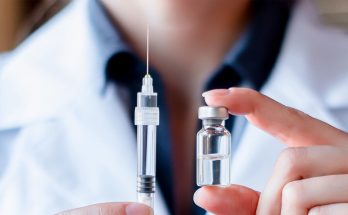Hand injuries are injuries to the hand or wrist. Many things, including falls, sports or work accidents, or car accidents, can cause these injuries. La Jolla hand injuries can also be caused by repetitive motion activities like typing on a computer keyboard or playing an instrument. Hand injuries can affect your ability to use your hands and fingers normally. They can range from mild to severe, depending on how badly your hand is injured.
Types of hand injuries include:
Fractures
The most common type of hand injury is a fracture. A fracture occurs when the bone breaks through the skin. Many different types of fractures can affect any bone in the hand. Fractures often result from falling onto an outstretched hand or being hit by something heavy. If a fracture is not treated correctly, it may cause problems with movement and pain in the hand later on.
Dislocations
A dislocation occurs when a joint is pulled out of place and needs to be repositioned back into its normal position before healing can occur. Dislocations can affect any joint in the body, including the hands and fingers. Dislocated joints may look crooked or bent out of shape, but this is not always the case. Sometimes there may be no visible signs of injury at all. Dislocations usually happen because of an accident where someone’s body is twisted suddenly or forcefully enough to pull their bones out of alignment.
Sprains
A sprain is a stretch or tear in ligaments that connect bones together at joints. When these ligaments stretch too far or get torn completely apart from their attachments to bones, it causes a sprain. Sprains can happen anywhere in your body but are most common in your hands because they are used so much throughout the day. There are many kinds of sprains depending on where they occur in your body and the type of injury caused.
How are hand injuries treated?
Physical therapy
Physical therapy aims to help patients regain strength, range of motion, muscle function, and overall mobility after an injury. Physical therapists use their training and expertise to help patients recover from injuries such as fractures, sprains and strains, torn ligaments or tendons, nerve damage, and other problems affecting the hand or wrist regions of the body.
Electrotherapy treatments
In addition to performing exercises under the guidance of a physical therapist, some patients may also receive electrotherapy treatments. These treatments use electrical currents delivered through electrodes placed on various body parts to stimulate muscles and increase blood flow throughout the injured area. The electrical stimulation helps reduce swelling and soreness associated with healing injuries by promoting blood flow through damaged tissues.
Anti-inflammatory injections
These injections can reduce swelling and discomfort associated with minor sprains and strains. Injections also help relieve pain by blocking pain signals from traveling up the nerve pathway to the brain.
Hand injuries can be extremely painful and debilitating, making it difficult to perform even basic tasks such as eating, writing, and typing. Hand injuries require specialized treatment to heal properly and regain function. Contact Upper Extremity Specialists of Ortho 1 Medical Group if you have sustained hand injuries.




